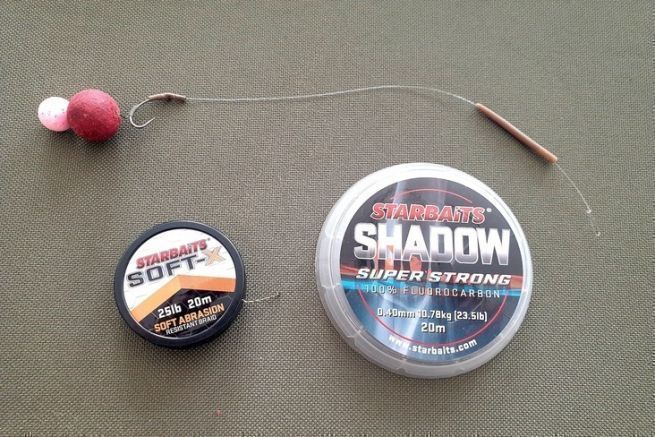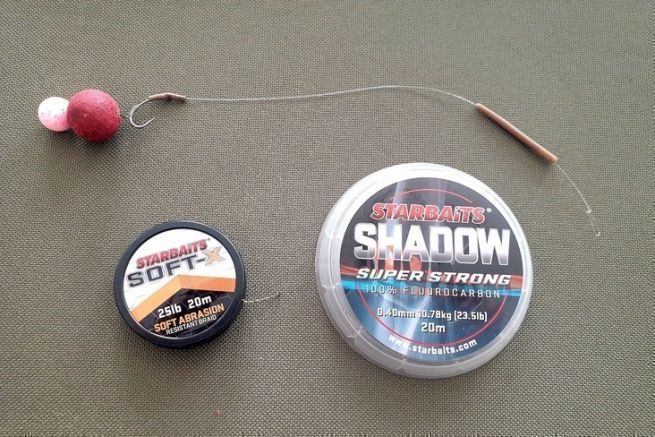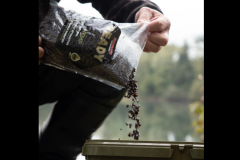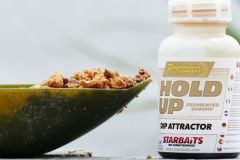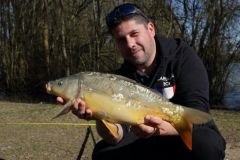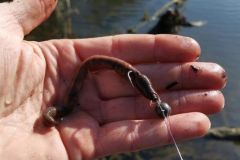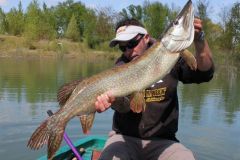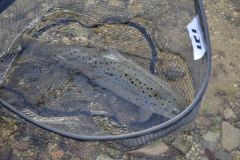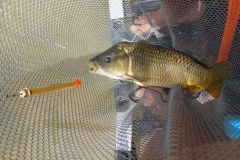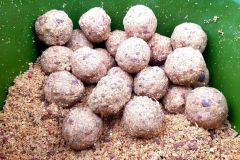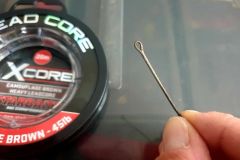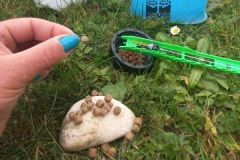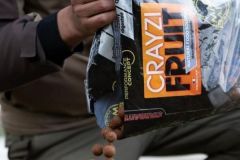Many carp anglers are turning to rigid materials such as fluorocarbon to make their leaders. They are convinced of the superiority of this material. But some of them keep this rigidity only up to the hook. Indeed, beyond that, they want a total flexibility to make the hair to obtain a perfect mobility and presentation.
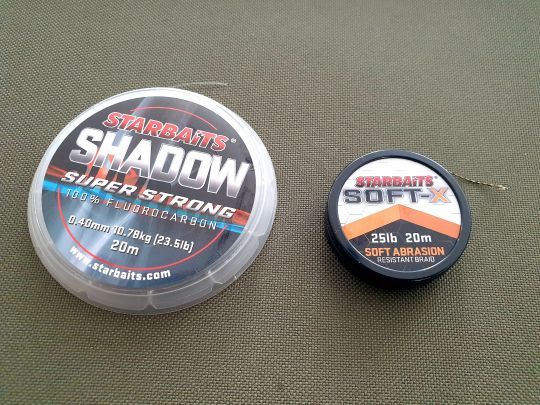
Rigid, but not only
To make such a leader, it is necessary to make a flexible braid attached to the hook with a knot without knot. Once the hook is "mounted", you just have to fix the fluorocarbon in the eye of the hook thanks to the fluorocarbon trick that I presented in a previous article. To perfect the fixing angle and protect the knot, we will add a heat-shrinkable sleeve.
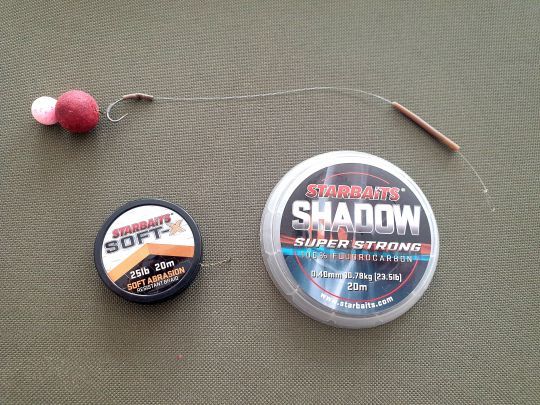
The advantages of fluorocarbon
I remind you again, a leader made in its entirety in fluorocarbon has a great rigidity. This last one presents several advantages to know to resist to the entanglements at the time of the deposits or the casts but also at the time of the attacks of pests. With such an assembly, we are sure that it fishes at 100 %.
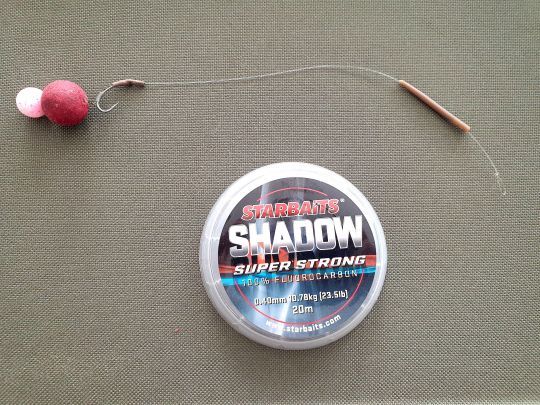
The positives don't stop there. Fluorocarbon offers a certain discretion thanks to a refractive index close to water. This does not mean that it is 100% invisible. Also, it does not absorb liquids or odors, which is a plus.
The disadvantages of fluorocarbon
On the other hand, the constitution of the fluorocarbon hair (like the rest of the leader) even if it allows the bait to stay away from the hook when the undesirables are active, has drawbacks.
It is indeed difficult to bait fragile baits, because the coarse knot of the fluorocarbon loop causes too much tearing or even bursting. Also, the mobility of the bait is more than restricted and the presentation leaves something to be desired, especially for balanced baits. So for some people, all this is prohibitive and they absolutely want to make a soft hair to find more finesse and technicality. All the more so if you use large diameter fluorocarbon.
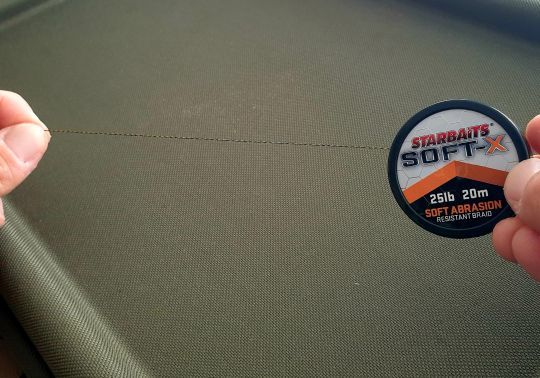
The material needed to make a rigid leader
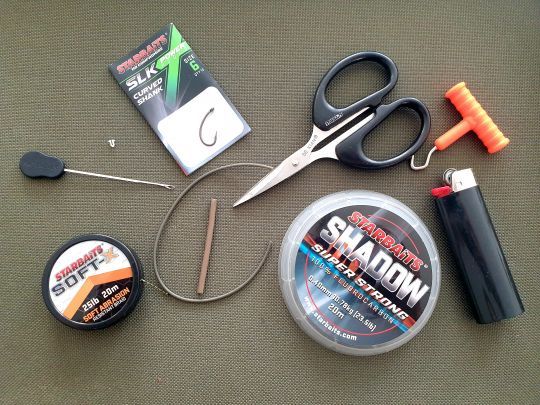
- Fluorocarbon Starbaits Shadow 40
- Starbaits Curved Shank #6 hook
- Soft-X Starbaits soft braid
- Silicone sheath 1 mm
- Heat shrinkable tubing 2.4 mm
- A SB Bait Stopper
- A pair of scissors
- A knot puller
- A needle
- A lighter
The steps of realization
1- Cut 20 cm of flexible braid.
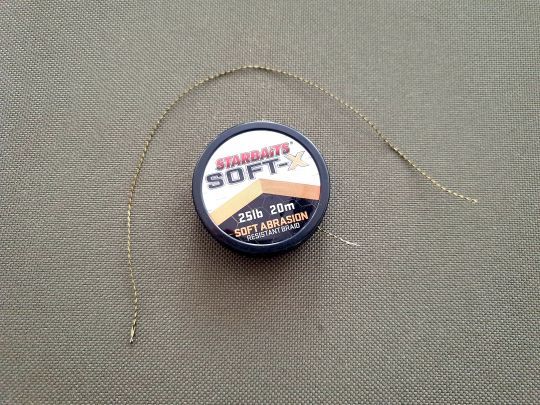
2- Make a small loop. It will be the terminal part of your hair and will receive the bait stop. Remember to tighten it with the knot puller.
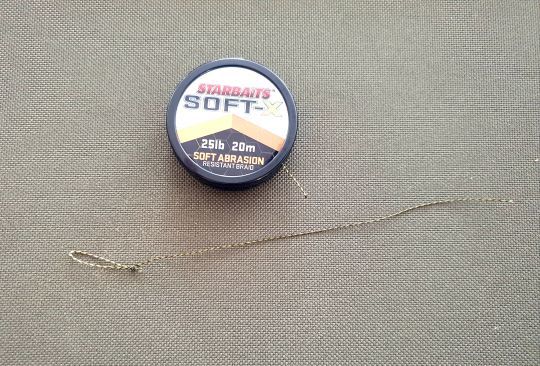
3- Start by baiting the chosen bait. Insert your bait stop in the loop and push your bait to the stop. This way, you will not be surprised when you are at the water's edge. This will ensure that the hair is the right size. The loop knot will also serve to lock in your bait.
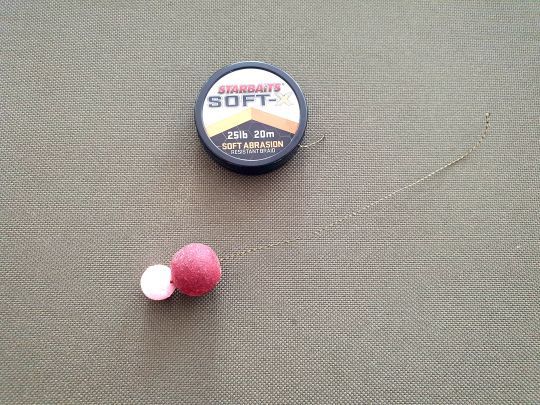
4- Cut and pass 3 mm of silicone sheath then insert the hook in it, point towards the hair. Be careful not to prick the braid during the passage.
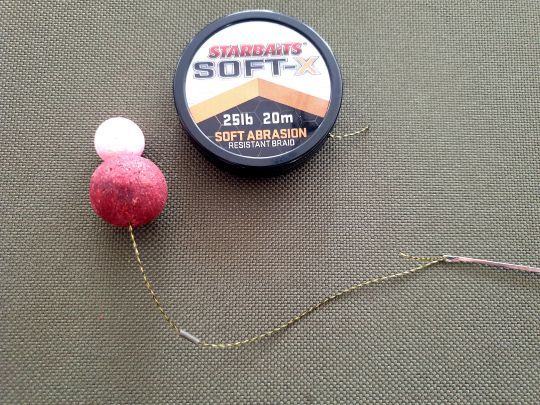
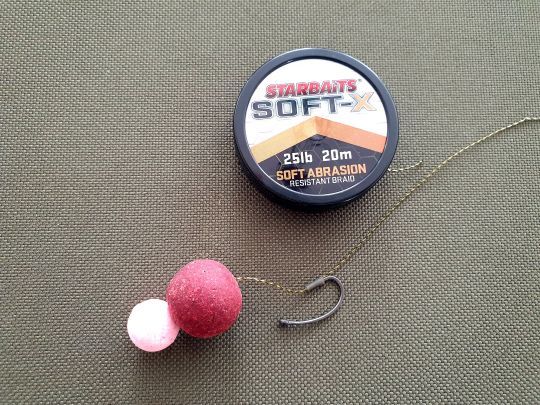
5- Position the silicone sheath in the curve of the hook facing the barb. Make sure that the hair is the right length.
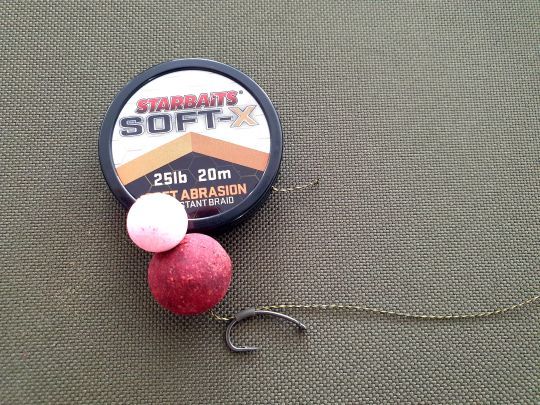
6- Tie a knot without a knot and then tie at the base of the eyelet (twice for a better hold). Cut off any excess braid and burn lightly to make a "stop".
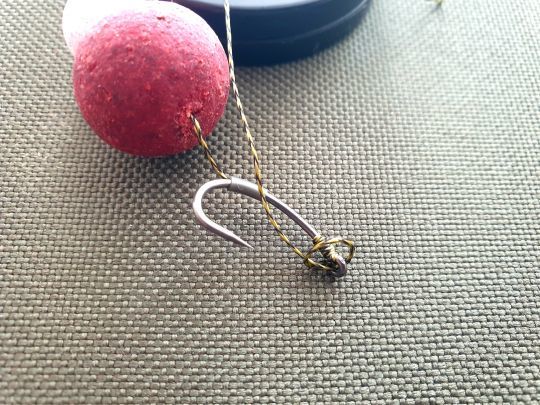
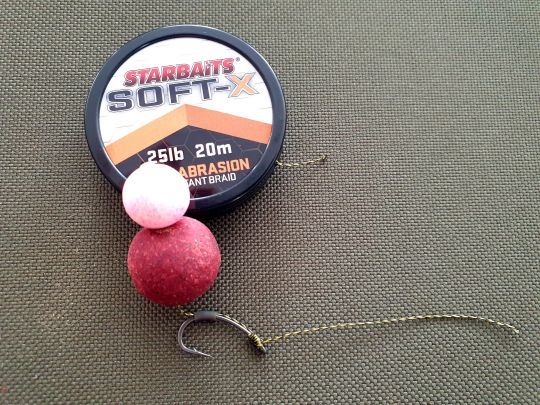
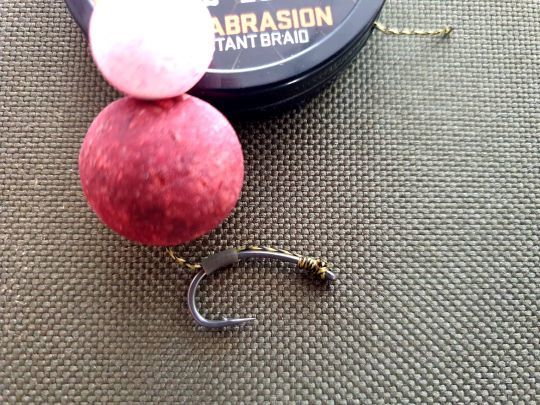
7- Cut 30 cm of fluorocarbon.
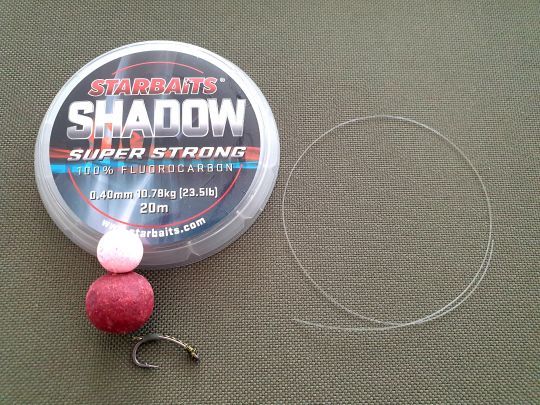
8- Attach the fluorocarbon to the hook eye using the fluorocarbon tip (see article). The loop should be as small as possible.

9- Cut 1.5 to 2 cm of heat shrink tubing.
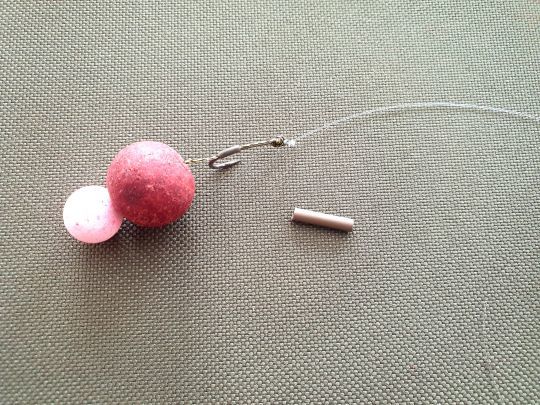
10- Insert the heat shrink tubing to protect the knot and especially to keep the angle given by the eyelet. Shrink with boiling water.
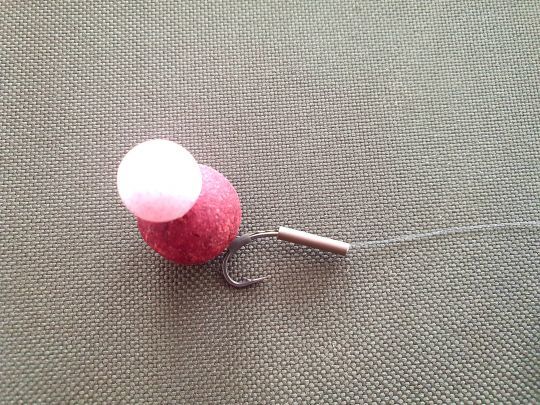
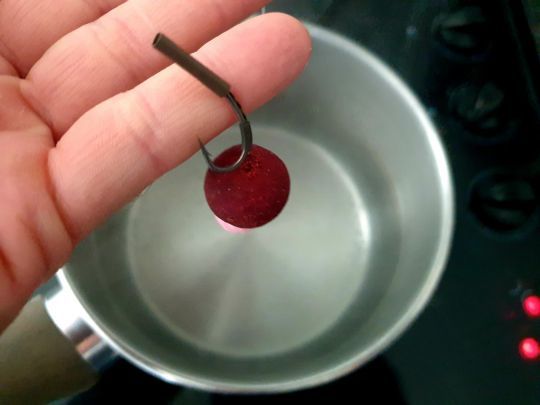
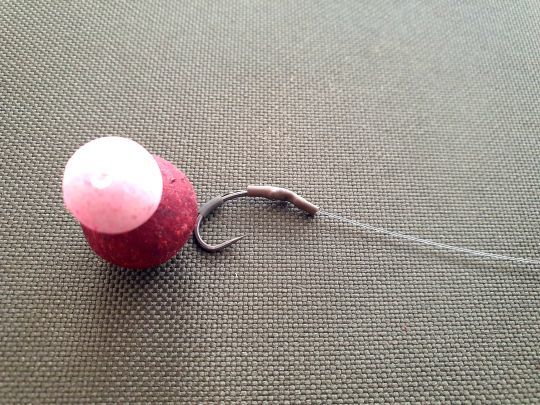
11- Insert an anti-tangle sleeve then make a loop with the fluorocarbon tip (see article). Adjust the size of the loop as needed.

This leader is perfect for those who want a rigid leader but who are particularly keen on the mobility of the bait and a perfect presentation.
